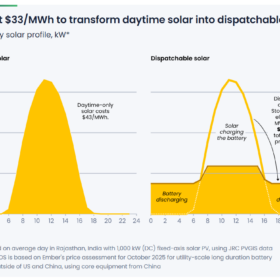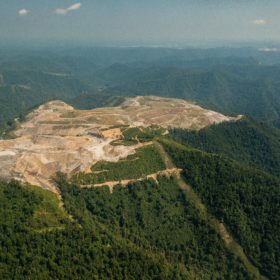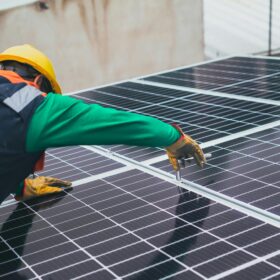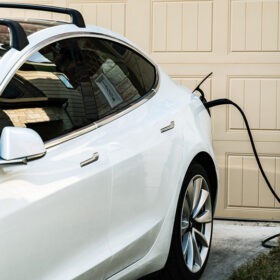There is more land taken up by golf courses across the world than by solar or wind energy plants, according to the findings of a new study.
The research paper, “Countries across the world use more land for golf courses than wind or solar energy,” was recently published in Environmental Research Communications. The researchers used the OpenStreetMap database to locate 38,400 golf courses in the world, of which 80% are located in the 10 countries with the most courses.
The United States tops the list, with more than 16,000 golf courses, followed by the United Kingdom (around 3,100) and Japan (around 2,700). Canada, Australia, Germany, South Korea, France, China and Sweden round out the top 10 countries.
The research team calculated that the renewable energy potential of the land taken up by golf courses and found that these 10 countries could install between 281 GW and 842 GW of utility-scale solar on 25% to 75% of the golf courses’ land area.
The research paper said the 75% figure exceeds the 646 GW of cumulative solar capacity currently installed in these 10 countries. In comparison, the 10 countries could install between 174 GW and 659 GW of onshore wind across the golf course areas, depending on spacing.
The researchers said that golf courses typically require large amounts of water and chemical treatments, while renewable energy installations offer a sustainable land use option. They said utility-scale solar farms require approximately 0.01 square km of land per megawatt, while wind farms require around 0.12 square km of land per megawatt.
The researchers said their findings “underscore the untapped potential of rethinking land use priorities to accelerate the transition to renewable energy.”
The lead author of the study, Jann Weinand of German research institute Forschungszentrum Jülich, emphasized that the study is not advocating for the direct conversion of golf courses, but rather aims to highlight the vast renewables potential of similarly large and underutilized areas.
“In light of the ongoing debates about land use for renewables, it is crucial to consider how we allocate land overall – especially when significant space is dedicated to activities that benefit only a limited segment of the population,” added Weinand.
This content is protected by copyright and may not be reused. If you want to cooperate with us and would like to reuse some of our content, please contact: editors@pv-magazine.com.








By submitting this form you agree to pv magazine using your data for the purposes of publishing your comment.
Your personal data will only be disclosed or otherwise transmitted to third parties for the purposes of spam filtering or if this is necessary for technical maintenance of the website. Any other transfer to third parties will not take place unless this is justified on the basis of applicable data protection regulations or if pv magazine is legally obliged to do so.
You may revoke this consent at any time with effect for the future, in which case your personal data will be deleted immediately. Otherwise, your data will be deleted if pv magazine has processed your request or the purpose of data storage is fulfilled.
Further information on data privacy can be found in our Data Protection Policy.